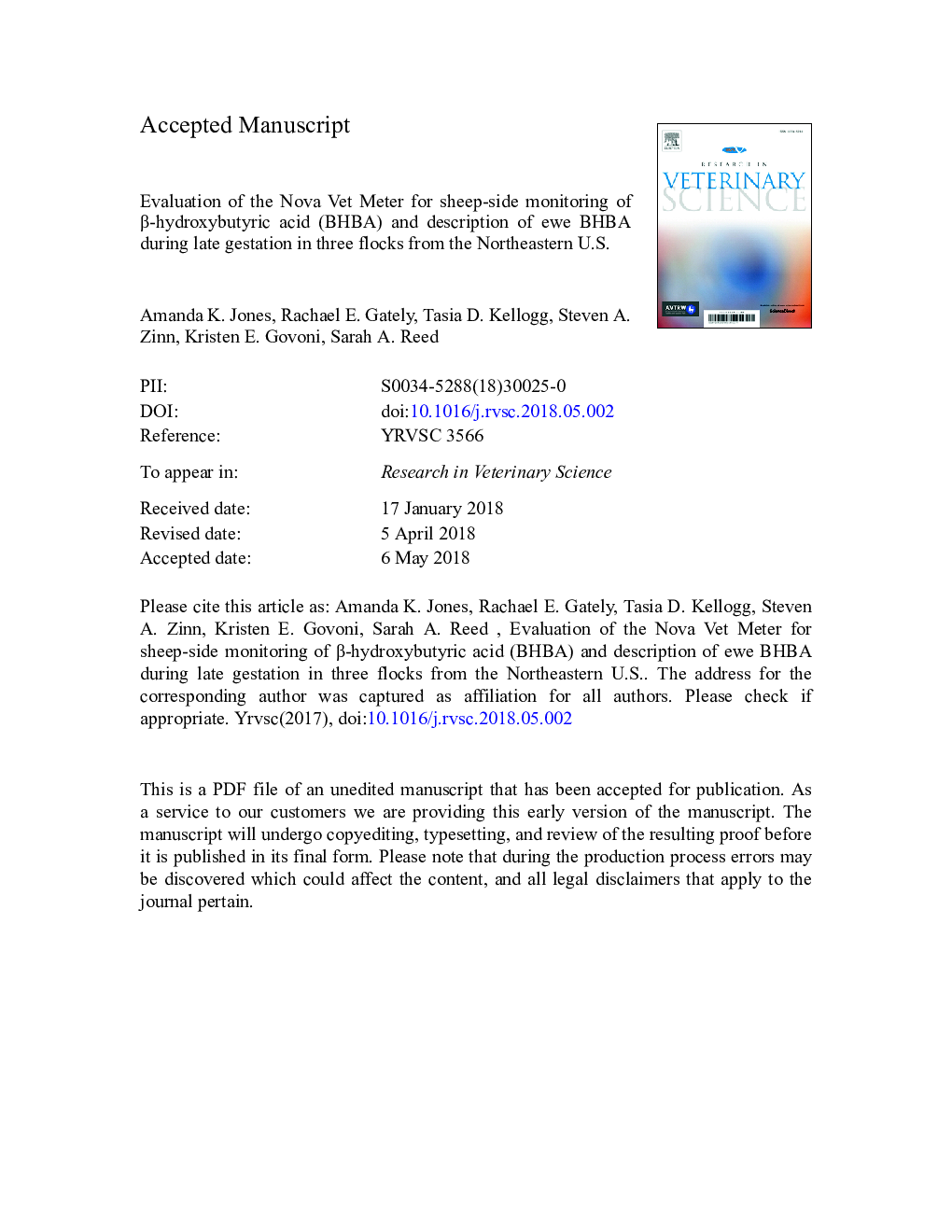| Article ID | Journal | Published Year | Pages | File Type |
|---|---|---|---|---|
| 8503987 | Research in Veterinary Science | 2018 | 38 Pages |
Abstract
Prevention of metabolic diseases in small ruminants may improve production efficiency and profitability, yet ewes carrying multiples or who are in poor body condition are at increased susceptibility to develop ketosis. This study evaluated the hand-held Nova Vet Meter to accurately detect β-hydroxybutyric acid (BHBA) concentrations in ewes and determined the percentage of ewes at moderate (0.8 to 1.5â¯mmol/L BHBA) and greatest (â¥1.6â¯mmol/L BHBA) risk to develop ketosis during late gestation. To validate the Nova Vet Meter, BHBA concentrations of 104 paired blood samples were measured using the Nova Vet Meter and gold-standard laboratory analysis. Receiver operating characteristics were calculated. The accuracy and sensitivity of detecting BHBA concentrations at 0.8 to 1.5â¯mmol/L were 94.2% and 97.3%, respectively. The accuracy and sensitivity of detecting BHBA concentrationsâ¯â¥â¯1.6â¯mmol/L were 98.0% and 50.0%, respectively. Ewe body weight (BW), body condition score (BCS), and BHBA of 117 ewes from three flocks were determined weekly during the four weeks before parturition. During the last three weeks of gestation >20% of ewes were identified with moderate risk to develop ketosis. During the last four weeks of gestation, ewes carrying triplets had reduced BCS (Pâ¯=â¯0.0002) and increased BHBA concentrations (Pâ¯<â¯0.0001) compared with singleton and twin pregnancies. Ewe BHBA did not correlate with lamb birth weight (R2â¯=â¯0.003; Pâ¯=â¯0.41). In conclusion, the Nova Vet Meter is suitable for sheep-side BHBA monitoring between 0.8 and 1.5â¯mmol/L, but further testing is necessary to evaluate BHBA readings â¥1.6â¯mmol/L.
Related Topics
Life Sciences
Agricultural and Biological Sciences
Animal Science and Zoology
Authors
Amanda K. Jones, Rachael E. Gately, Tasia D. Kellogg, Steven A. Zinn, Kristen E. Govoni, Sarah A. Reed,
